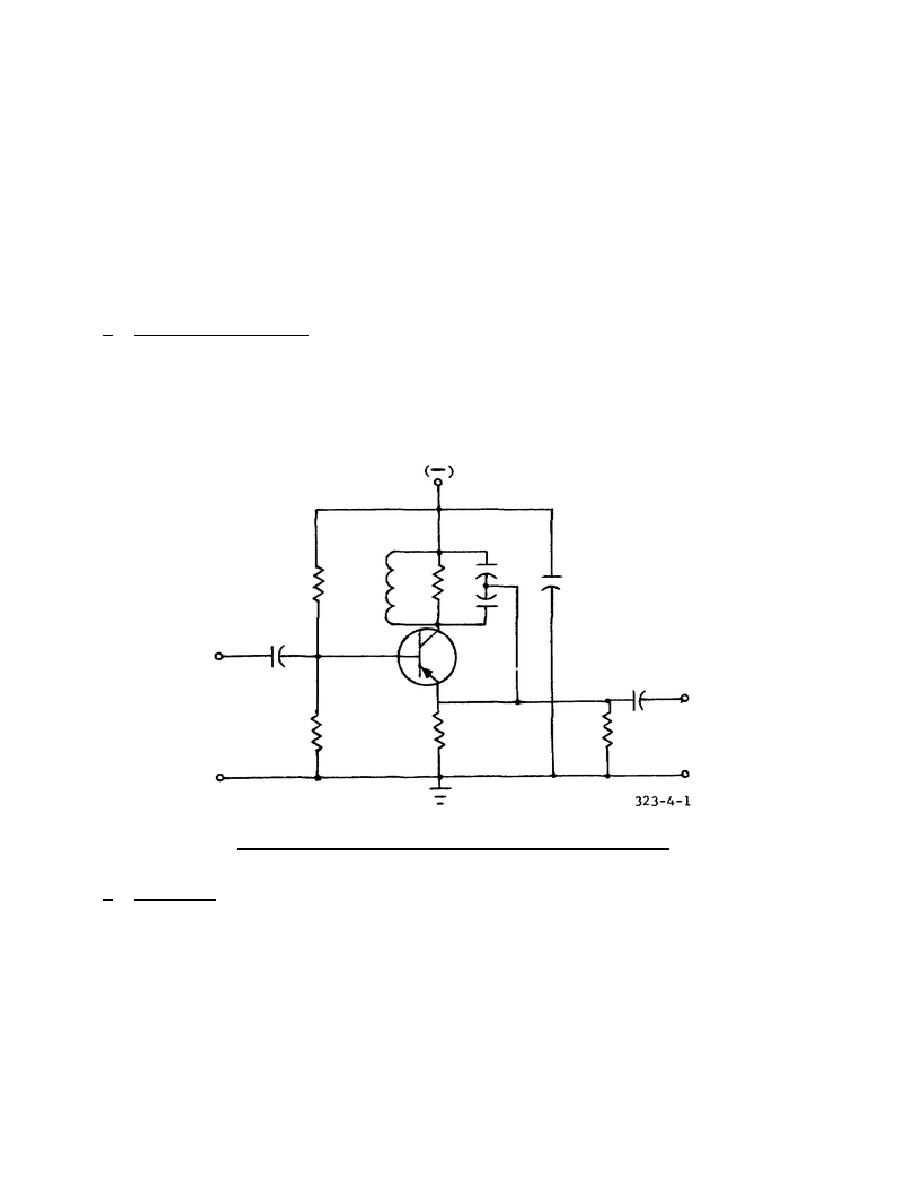
generation of subharmonics.
In one method, a frequency is injected into an
oscillator operating at a frequency other than the one injected.
It is assumed
that a frequency is generated within the oscillator so that a beat frequency can be
produced between the two frequencies.
Such a simple system is usually termed a
locked oscillator and is frequently useful when the frequency ratio (input ) is
small.
A more complicated system can be devised in which the functions of
frequency multiplication, beating or phase comparison, and oscillator phase control
or locking are carried out in separate portions of the circuit.
Although such a
device is capable of good performance at large frequency ratios, it is complicated,
and will not be considered here.
4-2.
LOCKED-OSCILLATOR FREQUENCY DIVIDER
The simple locked-oscillator frequency divider, shown
in figure 4-1, is capable of providing reliable frequency division at small
frequency ratios.
It consists of a grounded base oscillator, with the
synchronizing voltage applied between base and ground.
Successful operation of
this oscillator as a frequency divider requires that harmonics be produced at
frequencies near the input frequency.
The circuit employs dc stabilization to
assure reliable starting.
Figure 4-1.
Locked-oscillator frequency divider.
b. Operation. The
oscillator operates at a frequency that is determined by its
frequency-determining
network located in the collector circuit.
When an input
frequency is applied
to the base, the oscillator's resonant frequency is altered
slightly. In effect,
the input frequency locks the oscillator's
37


 Previous Page
Previous Page
